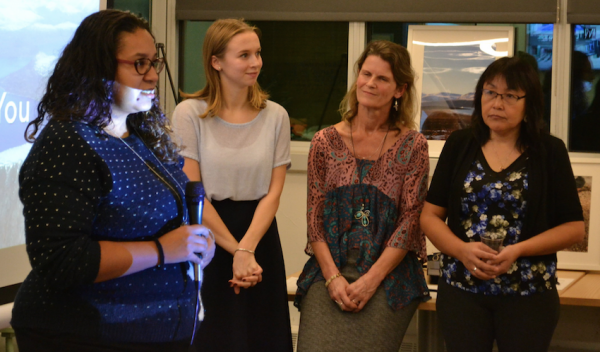The See Change Initiative collaborated with the Ilisaqsivik Society to host ‘Tackling TB in Nunavut: A Night of Photos and Stories’, a panel and silent auction on Nov. 8. The event aimed to raise money and awareness for the ongoing problem of tuberculosis (TB) among the Inuit people in northern Canada. The initiative, a non-profit organization, is dedicated to eradicating the health disparities that exist between Inuit and non-indigenous people: In addition to other health concerns, TB rates among Inuit are 300 times higher than those of non-indigenous Canadians.
Rachel Kiddell-Monroe, professor of practice at McGill and executive director of the See Change Initiative, described how the organization began.
“As Canadians, we could not simply sit at home and do nothing while a crisis of this magnitude was happening,” Monroe said.
With the help of Stephen Lewis, a Canadian politician, diplomat, and advocate for those affected by the TB crisis in Nunavut, the project began. The initiative uses the funds it raises to support training and workshops for groups up north, ensuring an Inuit-specific team and community-based model for health care delivery.
As an Inuit, Tina Pisuktie, corporate secretary for the Southern Quebec Inuit Association, expressed enthusiasm at finally having the opportunity to make decisions for themselves.
“It’s empowering to have the freedom and the ability to take on our own approaches,” Pisuktie said. “We’re so used to people coming in and telling us ‘do this, do that.’”
The panel incorporated a series of video interviews from members of the Ilisaqsivik Society detailing how the See Change Initiative operates. Additionally, the discussion featured heartbreaking testimonies from Inuit people affected by TB as well as the greater health problems up north.
Seeing a mother talk about her son’s unending battle with the treatable disease brings to light the realities Inuit people have been facing since the TB epidemic began over 150 years ago.
The TB epidemic is just the tip of the historical iceberg influencing the current inequities faced by Inuit people in Canada. According to Pisuktie, the Inuit were still a nomadic people as recently as two generations ago when the Canadian government mass-slaughtered their sled dogs, thereby eliminating a primary form of transport and forcing them into a sedentary lifestyle. Mobility restriction was a common tactic. In Aug. 1983, 87 Inuit were forcibly relocated to the High Arctic. Families were taken to barren conditions and separated from each other into three locations.
Though they were told that they would be allowed to return home after two years, the promise was not honoured. While the Canadian federal government claims that this was done in good faith, many saw the displacement as evidence of the families being used as human flagpoles to assert Canada’s dominance of the Far North during the height of the Cold War.
Colonialism left a deep cut in the history of the Inuit, and it is crucial to acknowledge both the historical context and current situations they face in the northern parts of Canada. Through projects like the See Change Initiative, Canadians can begin work on undoing wrongs and move toward a future not only of recognition but of equitable treatment of Inuit throughout the nation.






